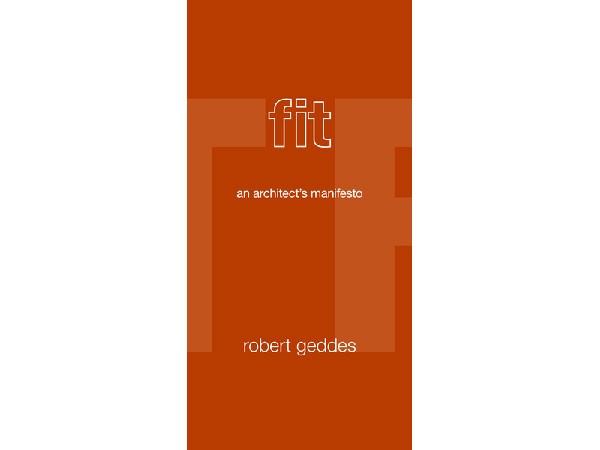
Author: Robert Geddes (Princeton University Press, 2013)
We often approach architectural design with our traditional older paradigms of thought. Form follows function, and less is more, are some of the basic rules designers religiously follow when building architectural spaces and structures. Urbanist and architect Robert Geddes argues that a new approach known as ‘fit’ must be considered when designing for the future. Fit is an approach that replaces older paradigms and suggests that the design of buildings, landscapes and even cities, should fit their purpose, place and future possibilities. In a short 136 page read, Fit: An Architect’s Manifesto explains the significance of ‘fit’ and how the design of spaces impact our lives, more than we may think. Applying ‘fit’, he argues, ensures that a dialogue occurs between physical structures and the spaces that are built within.
The book is broken into three parts, guiding the reader through the origins of architecture in a chronological order. Various examples are used throughout each section and refer to the photographs provided at the very beginning.
The first chapter, The Origin of Architecture Is Nature, is dedicated to understanding how we experience nature through architecture. Light and gravity are simple elements we often overlook, but when utilized properly, they can be tools used within its design. This applies to understanding physical landscapes and their relationship to the architecture, as well.
A perfect example refers to Jefferson’s concept behind the Academical Village (1819 – 1825) for the University of Virginia. The site was designed according to the physical and social forms Jefferson wanted to build. It embodies Jefferson’s ideals for landscape and architecture, culture and politics, using linear colonnades surrounding a central lawn. The university’s architectural form represents a building equivalent to a forest encompassing grassland. Both physical and social forms were expressed through a ‘fit’ physical design.
The second part – The Task of Architecture Is Function & Expression – states that architecture is a form of function, but also expression. Architecture goes beyond serving the function of sheltering people from harsh weather conditions. A building can be designed in various layers, just like we as humans wear various layers of clothing to keep us warm, but also express and identify who we are amongst others. Buildings which serve similar social functions such as institutions, are designed similarly in structure and appearance. It is important to be able to architecturally distinguish buildings so that an institutional building is never mistaken as a stadium. According to Geddes, spaces are significant and structured by a social need, prior to designing any physical form. Architecture must, therefore, address social needs that arise, and consider how the spaces should be designed in their shape but also how to make it ‘fit’.
The book ends with The Legacy of Architecture Is Form, a section that discusses how the legacy of architecture is within its physical form. Architecture must always include a structure that involves it materials and methods in construction, but also the arrangement of its parts in its organization. Popular examples used in the text include the Centre Pompidou in Paris, and Le Corbusier’s work where modularity was an important driver. Each of these examples considered the space’s purpose, the location’s surroundings and the impact it would have on people for many years to come.
The book is successful at explaining the concept of ‘fit’ and how we can go about making sure it is included in the design process. I agree that having a dialogue around this issue will improve the architectural landscape as is considers the impact it building(s) will have years after being completed. However, given that in-depth discussions around the long-term impact of a particular building can add more time to the process, it is also realistic to consider that the longer it takes to complete a project, the more it will cost. This raises questions around who will champion this type of initiative, as well as short-term versus long-term impacts?
Overall, I enjoyed Fit: An Architect’s Manifesto and Geddes has inspired me to consider the symbiotic relationship humans have with architecture. In future designs I will always remember to ask myself: Does it fit the purpose? Does it fit the location? Is it fit for future possibilities?
***
For more information on Fit: An Architect’s Manifesto, visit the Princeton University Press website.
**
Isabelle Kim is a Vancouver-based Communications & Design B.A. from SFU, involved in past public space and placemaking projects. She is an urban planning enthusiast obsessed with urban design and architecture.




